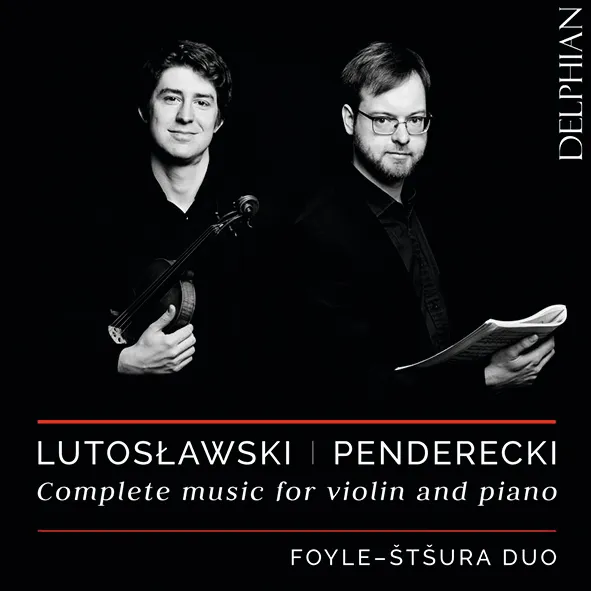
Lutosławski Subito; Recitativo e arioso; Partita; Penderecki Violin Sonatas Nos 1 & 2; Three Miniatures Foyle-Štšura Duo Delphian DCD34217 73:06 mins
For composers such as Witold Lutosławski (1913-94) and Krzysztof Penderecki (b1933), the orchestra was the favoured medium during the high noon of Polish modernism – one reason why their complete music for violin and piano amounts to six works only. Yet spanning almost half a century, this programme is illuminating in its contrasts and for what it reveals about these two very different figures. Lutosławski wrote Subito as a violin competition test piece towards the end of his life, and here it shows off the technique not only of the violinist Michael Foyle but also that of the pianist Maksim Štšura. Short and (in places) explosive, it still reflects the slight stylistic softening of the composer’s later years. Both players catch its beauty, and they are equally persuasive in Lutosławski’s haunting Recitativo e arioso, earliest (1951) of the pieces here. More often heard in its version with orchestra, Partita is spikier, and Foyle and Štšura handle it with commanding aplomb.
The Partita was composed for Pinchas Zuckerman, whereas Penderecki’s Sonata No. 2 was written for Anne-Sophie Mutter. Broadly tonal, with some diversions, it was completed on the last day of the 20th century, in a style from which the composer has since partly retreated (Nicholas Reyland’s excellent notes give it context). The Three Miniatures, Webern-like in their compactness, certainly belong to Penderecki's avant-garde period, and the Sonata No. 1 is his first published work yet highly accomplished – and enjoyable thanks to this Scottish-Estonian duo’s musical intelligence.
John Allison